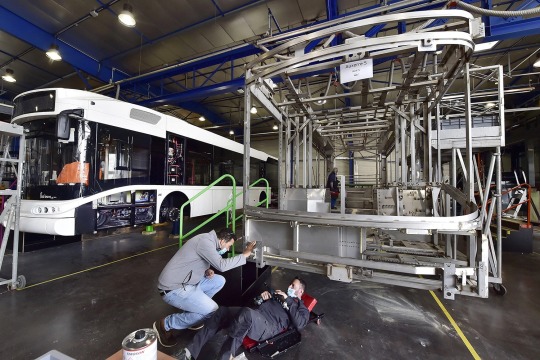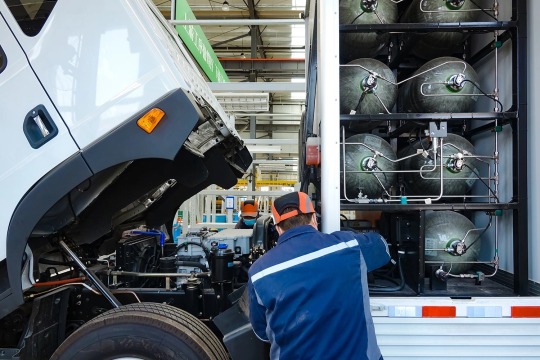#toyota uk
Text
Why I have a Soft Spot for the New Toyota GR 86

View On WordPress
#favouritegaycar#shorts#toyotagr86#Alan Zurvas#cars#gay boys#gay car#gay Car News#gay car reviews#gay cars#gay life#gay lifestyle#gay men#gaycarboys#shorts feed#shorts video#toyota australia#Toyota Canada#Toyota UK#toyota usa
1 note
·
View note
Text

#elon mask#motivacional#quotes#wholesome memes#tumblr memes#hard work#person centricity#celebration#celebrity#uk#team usa#usa today#america#united states#toyota usa#canada
3 notes
·
View notes
Text
not me thinking about trying to shell out to convert my fiat to a Plug in hybrid? hmmmmm
#toy txt post#ive just started VERY GENTLY looking into this actually bc i uh. have acquired a second car. my grandpa's old car.#it is a tiny fuckin go cart geo from 1992 stick shift and im gonna try to learn stick shift on it but anyway i was like hmm perhaps....i#could learn on that car? what if i did a project? what if i ripped out that tiny little engine and made it into a hybrid or electric?#i found one little DIY blog of someone who converted a very similar car to electric and then back into a hybrid to increase range#so its maybe doable? altho that one was from like 2012 and the hybrid conversion involved?? a propane tank in the trunk?#which. feels not ideal. idk. but then also i found one that looks way more current and legit? they seem to focus on like. fleets of#commercial cars BUT they have a section for consumer cars? it seems to be some kind of kit that they ship out to a qualified mechanic.#which honestly if i can afford it i think i would prefer that bc idk shit about cars and im sure dad could try to teach me but hybrid might#be outside his wheelhouse...hes worried about the weight itll add but like idk? there already are electric fiats same age as mine so#clearly they figured it out for that and that was w the older tech from the 2010s?#but i have no idea what the price is for a professional conversion bc it requires getting an actual Quote from them#and i am not ready for that step yet!!!!! but like. god. next new car i buy i want to be a plug in hybrid i think#that seems like it would be a better choice for how i use a car than a fully ev unless i shell out for one of the real expensive bitches#full of soooo many ''luxury'' features that i will hate so much not to mention how many now standard modern features i despise...ugh#there was one i liked....toyota yaris plug in hybrid....it is....only available in europe and the uk :))) so id have to figure out#purchasing and importing a foreign car without even a test drive unless i want to get on an airplane (aka flying covid tube) and do that#and like i wouldnt mind visiting europe sometime and seeing all my internet friends over there but like i dont want to have to go over for#like. a car. u kno? plus every car that is not My Fiat is bad and wrong and makes me angry and stressed to drive so honestly#idk might as well accept my commitment to it as a future moneypit and make it more eco friendly and save on gas#tho im sure if im charging it at the house ill have to negotiate paying at least part of the electric bill or smth...id love to get some#kind of portable solar charger on it too so im not necessarily just relying on the fossil fuel electricity at my house either? idk. but#that seems hard to find at best and idk like id want to use it while my car is parked jn the parking lot but i suppose there'd be an#increased risk of it getting stolen depending on where i am? idk#part of me is like i should try to professionally convert my fiat to hybrid and then maybe do the geo just ev since im not gonna be takin#that thing long distances anyway? but idk. theres also that little nagging fear about like the fire risk cos i always hear about teslas#with the scary fire shit from that new battery tech and other evs are using that too now to get comparable ranges so like?? are they less#safe? should i be concerned about putting smth like that on an already less safe car from the 90s? or should i just be like well fuck it#this shit is a deathtrap anyway? and then have intrusive thoughts about car fires the entire time im trying to focus on learning stick?#also stick shift fucking stressful. why does it go backwards so fucking fast? what gives?
2 notes
·
View notes
Text










A lot of red at Wem Vehicles of Interest.
1 note
·
View note
Text
I live & travel the country in my Toyota Camry full-time – it’s tight quarters but worth it to just ‘follow the sun’ | In Trend Today
I live & travel the country in my Toyota Camry full-time – it’s tight quarters but worth it to just ‘follow the sun’
Read Full Text
or
Full Article on MAG NEWS

View On WordPress
#Celebrities#I live & travel the country in my Toyota Camry full-time – it’s tight quarters but worth it to just ‘follow the sun’#Money#Motors#Politics#ShowBiz#Sport#Tech#UK#US#World
0 notes
Text
Americans can claim free money under Toyota air bag $78.5million settlement – exact steps to apply | In Trend Today
Americans can claim free money under Toyota air bag $78.5million settlement – exact steps to apply
Read Full Text
or
Full Article on MAG NEWS

View On WordPress
#Americans can claim free money under Toyota air bag $78.5million settlement – exact steps to apply#Celebrities#Money#Motors#Politics#ShowBiz#Sport#Tech#Trends#UK#US#World
0 notes
Photo

Business start-ups: collaborate with Toyota Open Labs
Toyota launches Toyota Open Labs to help business start-ups scale innovation and lead the market into the next phase of mobility. The post Business start-ups: collaborate with Toyota Open Labs appeared first on Toyota UK Magazine.
https://mag.toyota.co.uk/business-start-ups-toyota-open-labs/
0 notes
Text
Hydrogen Is the Future—or a Complete Mirage!
The green-hydrogen industry is a case study in the potential—for better and worse—of our new economic era.
— July 14, 2023 | Foreign Policy | By Adam Tooze

An employee of Air Liquide in front of an electrolyzer at the company's future hydrogen production facility of renewable hydrogen in Oberhausen, Germany, on May 2, 2023. Ina Fassbender/ AFP Via Getty Images
With the vast majority of the world’s governments committed to decarbonizing their economies in the next two generations, we are embarked on a voyage into the unknown. What was once an argument over carbon pricing and emissions trading has turned into an industrial policy race. Along the way there will be resistance and denial. There will also be breakthroughs and unexpected wins. The cost of solar and wind power has fallen spectacularly in the last 20 years. Battery-powered electric vehicles (EVs) have moved from fantasy to ubiquitous reality.
But alongside outright opposition and clear wins, we will also have to contend with situations that are murkier, with wishful thinking and motivated reasoning. As we search for technical solutions to the puzzle of decarbonization, we must beware the mirages of the energy transition.
On a desert trek a mirage can be fatal. Walk too far in the wrong direction, and there may be no way back. You succumb to exhaustion before you can find real water. On the other hand, if you don’t head toward what looks like an oasis, you cannot be sure that you will find another one in time.
Right now, we face a similar dilemma, a dilemma of huge proportions not with regard to H2O but one of its components, H2—hydrogen. Is hydrogen a key part of the world’s energy future or a dangerous fata morgana? It is a question on which tens of trillions of dollars in investment may end up hinging. And scale matters.
For decades, economists warned of the dangers of trying through industrial policy to pick winners. The risk is not just that you might fail, but that in doing so you incur costs. You commit real resources that foreclose other options. The lesson was once that we should leave it to the market. But that was a recipe for a less urgent time. The climate crisis gives us no time. We cannot avoid the challenge of choosing our energy future. As Chuck Sabel and David Victor argue in their important new book Fixing the Climate: Strategies for an Uncertain World, it is through local partnership and experimentation that we are most likely to find answers to these technical dilemmas. But, as the case of hydrogen demonstrates, we must beware the efforts of powerful vested interests to use radical technological visions to channel us toward what are in fact conservative and ruinously expensive options.

A green hydrogen plant built by Spanish company Iberdrola in Puertollano, Spain, on April 18, 2023. Valentine Bontemps/AFP Via Getty Images
In the energy future there are certain elements that seem clear. Electricity is going to play a much bigger role than ever before in our energy mix. But some very knotty problems remain. Can electricity suffice? How do you unleash the chemical reactions necessary to produce essential building blocks of modern life like fertilizer and cement without employing hydrocarbons and applying great heat? To smelt the 1.8 billion tons of steel we use every year, you need temperatures of almost 2,000 degrees Celsius. Can we get there without combustion? How do you power aircraft flying thousands of miles, tens of thousands of feet in the air? How do you propel giant container ships around the world? Electric motors and batteries can hardly suffice.
Hydrogen recommends itself as a solution because it burns very hot. And when it does, it releases only water. We know how to make hydrogen by running electric current through water. And we know how to generate electricity cleanly. Green hydrogen thus seems easily within reach. Alternatively, if hydrogen is manufactured using natural gas rather than electrolysis, the industrial facilities can be adapted to allow immediate, at-source CO2 capture. This kind of hydrogen is known as blue hydrogen.
Following this engineering logic, H2 is presented by its advocates as a Swiss army knife of the energy transition, a versatile adjunct to the basic strategy of electrifying everything. The question is whether H2 solutions, though they may be technically viable, make any sense from the point of view of the broader strategy of energy transition, or whether they might in fact be an expensive wrong turn.
Using hydrogen as an energy store is hugely inefficient. With current technology producing hydrogen from water by way of electrolysis consumes vastly more energy than will be stored and ultimately released by burning the hydrogen. Why not use the same electricity to generate the heat or drive a motor directly? The necessary electrolysis equipment is expensive. And though hydrogen may burn cleanly, as a fuel it is inconvenient because of its corrosive properties, its low energy per unit of volume, and its tendency to explode. Storing and moving hydrogen around will require huge investment in shipping facilities, pipelines, filling stations, or facilities to convert hydrogen into the more stable form of ammonia.
The kind of schemes pushed by hydrogen’s lobbyists foresee annual consumption rising by 2050 to more than 600 million tons per annum, compared to 100 million tons today. This would consume a huge share of green electricity production. In a scenario favored by the Hydrogen Council, of the United States’ 2,900 gigawatts of renewable energy production, 650 gigawatts would be consumed by hydrogen electrolysis. That is almost three times the total capacity of renewable power installed today.
The costs will be gigantic. The cost for a hydrogen build-out over coming decades could run into the tens of trillions of dollars. Added to which, to work as a system, the investment in hydrogen production, transport, and consumption will have to be undertaken simultaneously.
Little wonder, perhaps, that though the vision of the “hydrogen economy” as an integrated economic and technical system has been around for half a century, we have precious little actual experience with hydrogen fuel. Indeed, there is an entire cottage industry of hydrogen skeptics. The most vocal of these is Michael Liebreich, whose consultancy has popularized the so-called hydrogen ladder, designed to highlight how unrealistic many of them are. If one follows the Liebreich analysis, the vast majority of proposed hydrogen uses in transport and industrial heating are, in fact, unrealistic due to their sheer inefficiency. In each case there is an obvious alternative, most of them including the direct application of electricity.

Technicians work on the construction of a hydrogen bus at a plant in Albi, France, on March 4, 2021. Georges Gobet/AFP Via Getty Images
Nevertheless, in the last six years a huge coalition of national governments and industrial interests has assembled around the promise of a hydrogen-based economy.
The Hydrogen Council boasts corporate sponsors ranging from Airbus and Aramco to BMW, Daimler Truck, Honda, Toyota and Hyundai, Siemens, Shell, and Microsoft. The national governments of Japan, South Korea, the EU, the U.K., the U.S., and China all have hydrogen strategies. There are new project announcements regularly. Experimental shipments of ammonia have docked in Japan. The EU is planning an elaborate network of pipelines, known as the hydrogen backbone. All told, the Hydrogen Council counts $320 billion in hydrogen projects announced around the world.
Given the fact that many new uses of hydrogen are untested, and given the skepticism among many influential energy economists and engineers, it is reasonable to ask what motivates this wave of commitments to the hydrogen vision.
In technological terms, hydrogen may represent a shimmering image of possibility on a distant horizon, but in political economy terms, it has a more immediate role. It is a route through which existing fossil fuel interests can imagine a place for themselves in the new energy future. The presence of oil majors and energy companies in the ranks of the Hydrogen Council is not coincidental. Hydrogen enables natural gas suppliers to imagine that they can transition their facilities to green fuels. Makers of combustion engines and gas turbines can conceive of burning hydrogen instead. Storing hydrogen or ammonia like gas or oil promises a solution to the issues of intermittency in renewable power generation and may extend the life of gas turbine power stations. For governments around the world, a more familiar technology than one largely based on solar panels, windmills, and batteries is a way of calming nerves about the transformation they have notionally signed up for.
Looking at several key geographies in which hydrogen projects are currently being discussed offers a compound psychological portrait of the common moment of global uncertainty.

A worker at the Fukushima Hydrogen Energy Research Field, a test facility that produces hydrogen from renewable energy, in Fukushima, Japan, on Feb. 15, 2023. Richard A. Brooks/AFP Via Getty Images
The first country to formulate a national hydrogen strategy was Japan. Japan has long pioneered exotic energy solutions. Since undersea pipelines to Japan are impractical, it was Japanese demand that gave life to the seaborne market for liquefied natural gas (LNG). What motivated the hydrogen turn in 2017 was a combination of post-Fukushima shock, perennial anxiety about energy security, and a long-standing commitment to hydrogen by key Japanese car manufacturers. Though Toyota, the world’s no. 1 car producer, pioneered the hybrid in the form of the ubiquitous Prius, it has been slow to commit to full electric. The same is true for the other East Asian car producers—Honda, Nissan, and South Korea’s Hyundai. In the face of fierce competition from cheap Chinese electric vehicles, they embrace a government commitment to hydrogen, which in the view of many experts concentrates on precisely the wrong areas i.e. transport and electricity generation, rather than industrial applications.
The prospect of a substantial East Asian import demand for hydrogen encourages the economists at the Hydrogen Council to imagine a global trade in hydrogen that essentially mirrors the existing oil and gas markets. These have historically centered on flows of hydrocarbons from key producing regions such as North Africa, the Middle East, and North America to importers in Europe and Asia. Fracked natural gas converted into LNG is following this same route. And it seems possible that hydrogen and ammonia derived from hydrogen may do the same.
CF Industries, the United States’ largest producer of ammonia, has finalized a deal to ship blue ammonia to Japan’s largest power utility for use alongside oil and gas in power generation. The CO2 storage that makes the ammonia blue rather than gray has been contracted between CF Industries and U.S. oil giant Exxon. A highly defensive strategy in Japan thus serves to provide a market for a conservative vision of the energy transition in the United Sates as well. Meanwhile, Saudi Aramco, by far the world’s largest oil company, is touting shipments of blue ammonia, which it hopes to deliver to Japan or East Asia. Though the cost in terms of energy content is the equivalent of around $250 per barrel of oil, Aramco hopes to ship 11 million tons of blue ammonia to world markets by 2030.
To get through the current gas crisis, EU nations have concluded LNG deals with both the Gulf states and the United States. Beyond LNG, it is also fully committed to the hydrogen bandwagon. And again, this follows a defensive logic. The aim is to use green or blue hydrogen or ammonia to find a new niche for European heavy industry, which is otherwise at risk of being entirely knocked out of world markets by high energy prices and Europe’s carbon levy.
The European steel industry today accounts for less than ten percent of global production. It is a leader in green innovation. And the world will need technological first-movers to shake up the fossil-fuel dependent incumbents, notably in China. But whether this justifies Europe’s enormous commitment to hydrogen is another question. It seems motivated more by the desire to hold up the process of deindustrialization and worries about working-class voters drifting into the arms of populists, than by a forward looking strategic calculus.
In the Netherlands, regions that have hitherto served as hubs for global natural gas trading are now competing for designation as Europe’s “hydrogen valley.” In June, German Chancellor Olaf Scholz and Italian Prime Minister Giorgia Meloni inked the contract on the SoutH2 Corridor, a pipeline that will carry H2 up the Italian peninsula to Austria and southern Germany. Meanwhile, France has pushed Spain into agreeing to a subsea hydrogen connection rather than a natural gas pipeline over the Pyrenees. Spain and Portugal have ample LNG terminal capacity. But Spain’s solar and wind potential also make it Europe’s natural site for green hydrogen production and a “green hydrogen” pipe, regardless of its eventual uses, in the words of one commentator looks “less pharaonic and fossil-filled” than the original natural gas proposal.

A hydrogen-powered train is refilled by a mobile hydrogen filling station at the Siemens test site in Wegberg, Germany, on Sept. 9, 2022. Bernd/AFP Via Getty Images
How much hydrogen will actually be produced in Europe remains an open question. Proximity to the point of consumption and the low capital costs of investment in Europe speak in favor of local production. But one of the reasons that hydrogen projects appeal to European strategists is that they offer a new vision of European-African cooperation. Given demographic trends and migration pressure, Europe desperately needs to believe that it has a promising African strategy. Africa’s potential for renewable electricity generation is spectacular. Germany has recently entered into a hydrogen partnership with Namibia. But this raises new questions.
First and foremost, where will a largely desert country source the water for electrolysis? Secondly, will Namibia export only hydrogen, ammonia, or some of the industrial products made with the green inputs? It would be advantageous for Namibia to develop a heavy-chemicals and iron-smelting industry. But from Germany’s point of view, that might well defeat the object, which is precisely to provide affordable green energy with which to keep industrial jobs in Europe.
A variety of conservative motives thus converge in the hydrogen coalition. Most explicit of all is the case of post-Brexit Britain. Once a leader in the exit from coal, enabled by a “dash for gas” and offshore wind, the U.K. has recently hit an impasse. Hard-to-abate sectors like household heating, which in the U.K. is heavily dependent on natural gas, require massive investments in electrification, notably in heat pumps. These are expensive. In the United Kingdom, the beleaguered Tory government, which has presided over a decade of stagnating real incomes, is considering as an alternative the widespread introduction of hydrogen for domestic heating. Among energy experts this idea is widely regarded as an impractical boondoggle for the gas industry that defers the eventual and inevitable electrification at the expense of prolonged household emissions. But from the point of view of politics, it has the attraction that it costs relatively less per household to replace natural gas with hydrogen.

Employees work on the assembly line of fuel cell electric vehicles powered by hydrogen at a factory in Qingdao, Shandong province, China, on March 29, 2022. VCG Via Getty Images
As this brief tour suggests, there is every reason to fear that tens of billions of dollars in subsidies, vast amounts of political capital, and precious time are being invested in “green” energy investments, the main attraction of which is that they minimize change and perpetuate as far as possible the existing patterns of the hydrocarbon energy system. This is not greenwashing in the simple sense of rebadging or mislabeling. If carried through, it is far more substantial than that. It will build ships and put pipes in the ground. It will consume huge amounts of desperately scarce green electricity. And this faces us with a dilemma.
In confronting the challenge of the energy transition, we need a bias for action. We need to experiment. There is every reason to trust in learning-curve effects. Electrolyzers, for instance, will get more affordable, reducing the costs of hydrogen production. At certain times and in certain places, green power may well become so abundant that pouring it into electrolysis makes sense. And even if many hydrogen projects do not succeed, that may be a risk worth taking. We will likely learn new techniques in the process. In facing the uncertainties of the energy transition, we need to cultivate a tolerance for failure. Furthermore, even if hydrogen is a prime example of corporate log-rolling, we should presumably welcome the broadening of the green coalition to include powerful fossil fuel interests.
The real and inescapable tradeoff arises when we commit scarce resources—both real and political—to the hydrogen dream. The limits of public tolerance for the costs of the energy transition are already abundantly apparent, in Asia and Europe as well as in the United States. Pumping money into subsidies that generate huge economies of scale and cost reductions is one thing. Wasting money on lame-duck projects with little prospect of success is quite another. What is at stake is ultimately the legitimacy of the energy transition as such.
In the end, there is no patented method distinguishing self-serving hype from real opportunity. There is no alternative but to subject competing claims to intense public, scientific, and technical scrutiny. And if the ship has already sailed and subsidies are already on the table, then retrospective cost-benefit assessment is called for.
Ideally, the approach should be piecemeal and stepwise, and in this regard the crucial thing to note about hydrogen is that to regard it as a futuristic fantasy is itself misguided. We already live in a hydrogen-based world. Two key sectors of modern industry could not operate without it. Oil refining relies on hydrogen, as does the production of fertilizer by the Haber-Bosch process on which we depend for roughly half of our food production. These two sectors generate the bulk of the demand for the masses of hydrogen we currently consume.
We may not need 600 million, 500 million, or even 300 million tons of green and blue hydrogen by 2050. But we currently use about 100 million, and of that total, barely 1 million is clean. It is around that core that hydrogen experimentation should be concentrated, in places where an infrastructure already exists. This is challenging because transporting hydrogen is expensive, and many of the current points of use of hydrogen, notably in Europe, are not awash in cheap green power. But there are two places where the conditions for experimentation within the existing hydrogen economy seem most propitious.
One is China, and specifically northern China and Inner Mongolia, where China currently concentrates a large part of its immense production of fertilizer, cement, and much of its steel industry. China is leading the world in the installation of solar and wind power and is pioneering ultra-high-voltage transmission. Unlike Japan and South Korea, China has shown no particular enthusiasm for hydrogen. It is placing the biggest bet in the world on the more direct route to electrification by way of renewable generation and batteries. But China is already the largest and lowest-cost producer of electrolysis equipment. In 2022, China launched a modestly proportioned hydrogen strategy. In cooperation with the United Nations it has initiated an experiment with green fertilizer production, and who would bet against its chances of establishing a large-scale hydrogen energy system?
The other key player is the United States. After years of delay, the U.S. lags far behind in photovoltaics batteries, and offshore wind. But in hydrogen, and specifically in the adjoining states of Texas and Louisiana on the Gulf of Mexico, it has obvious advantages over any other location in the West. The United States is home to a giant petrochemicals complex. It is the only Western economy that can compete with India and China in fertilizer production. In Texas, there are actually more than 2500 kilometers of hardened hydrogen pipelines. And insofar as players like Exxon have a green energy strategy, it is carbon sequestration, which will be the technology needed for blue hydrogen production.
It is not by accident that America’s signature climate legislation, the Inflation Reduction Act, targeted its most generous subsidies—the most generous ever offered for green energy in the United States—on hydrogen production. The hydrogen lobby is hard at work, and it has turned Texas into the lowest-cost site for H2 production in the Western world. It is not a model one would want to see emulated anywhere else, but it may serve as a technology incubator that charts what is viable and what is not.
There is very good reason to suspect the motives of every player in the energy transition. Distinguishing true innovation from self-serving conservatism is going to be a key challenge in the new era in which we have to pick winners. We need to develop a culture of vigilance. But there are also good reasons to expect certain key features of the new to grow out of the old. Innovation is miraculous but it rarely falls like mana from heaven. As Sabel and Victor argue in their book, it grows from within expert technical communities with powerful vested interests in change. The petrochemical complex of the Gulf of Mexico may seem an unlikely venue for the birth of a green new future, but it is only logical that the test of whether the hydrogen economy is a real possibility will be run at the heart of the existing hydrocarbon economy.
— Adam Tooze is a Columnist at Foreign Policy and a History Professor and the Director of the European Institute at Columbia University. He is the Author of Chartbook, a newsletter on Rconomics, Geopolitics, and History.
#Hydrogen#Battery-Powered Electric Vehicles (EVs)#Chuck Sabel | David Victor#Iberdrola Puertollano Spain 🇪🇸#Green Hydrogen#Hydrogen Council of the United States 🇺🇸#Hydrogen Economy#Airbus | Aramco | BMW | Daimler Truck | Honda | Toyota | Hyundai | Siemens | Shell | Microsoft#Japan 🇯🇵 | South Korea 🇰🇷 | EU 🇪🇺 | UK 🇬🇧 | US 🇺🇸 | China 🇨🇳#Portugal 🇵🇹 | Germany 🇩🇪 | Namibia 🇳🇦#European-African Cooperation
1 note
·
View note
Text
Explore a Wide Range of Toyota Parts in the UK | CarParts247 UK
🔧 Discover a vast selection of Toyota parts in the UK at CarParts247 UK. Enhance your Toyota's performance and style with aftermarket options or opt for reliability and quality with genuine Toyota parts. 🚗🔩

Toyota Parts UK: Investigate an Extensive variety of Toyota Extras, Reseller's exchange Parts, and Certified Toyota Parts at CarParts247 UK
Presentation:
Might it be said that you are needing great parts for your Toyota vehicle in the UK? Look no farther than CarParts247 UK! As a main vehicle parts online business site, we offer an immense determination of Toyota parts, taking special care of each and every model and prerequisite. Whether you're searching for Toyota adornments, reseller's exchange parts, or certified Toyota parts, we take care of you. In this extensive aide, we will dig into the universe of Toyota parts, giving important experiences, tips, and suggestions to assist you with pursuing informed decisions. We should make a plunge!
Headings:
Toyota Extras UK: Upgrade Your Toyota's Style and Usefulness
Investigate an extensive variety of Toyota extras that can customize and hoist your driving experience.
From smart outside improvements to down to earth inside increments, find how Toyota frill can have an effect.
Toyota Secondary selling Parts UK: Execution and Customization Choices
Release the maximum capacity of your Toyota with reseller's exchange parts intended for execution and customization.
Find out about famous reseller's exchange overhauls like exhaust frameworks, suspension parts, and that's only the tip of the iceberg.
Authentic Toyota Parts UK: Dependability and Quality Guaranteed
Trust in the credibility and unwavering quality of authentic Toyota parts for ideal execution and life span.
Comprehend the advantages of picking certifiable Toyota parts and how they guarantee an exact fit and unrivaled quality.
Certified Toyota Parts Online UK: Accommodation Readily available
Find the accommodation of looking for authentic Toyota parts on the web, right from the solace of your home.
Find out about the benefits of internet buying, including simple perusing, secure exchanges, and doorstep conveyance.
Toyota Extras UK: Track down the Right Parts for Fixes and Upkeep
Investigate our broad stock of Toyota saves, covering a great many parts for fixes and upkeep.
Find the specific parts you want to keep your Toyota in magnificent condition and address any issues that might emerge.
Toyota Parts Online UK: The Savvy Method for obtaining Your Toyota Parts
Find the advantages of looking for Toyota parts web based, including a tremendous determination, serious costs, and comfort.
Figure out how our easy to understand site and proficient pursuit instruments make finding and requesting Toyota parts a breeze.
Website: - https://carparts247.co.uk/carparts/toyota-parts-uk
0 notes
Text
2025 Honda S2000 Release Date
Hey there funny people, have you heard the latest news about the 2022 Honda HRV PHEV Redesign? It looks like Honda is releasing some new models in the near future, and they’re bound to turn heads on the road. The new designs look sleek and modern, and we can’t wait to see them hit the streets.
The 2022 Honda HRV PHEV Redesign is Here!
Honda has been keeping the details of the new HRV PHEV under…

View On WordPress
#2023 Honda Cr V Uk#2023 Honda Crv Apple Carplay#2023 Honda Crv Ex L#2023 Honda Crv Floor Mats Canada#2023 Honda Crv Keyless Entry#2023 Honda Crv Or Toyota Rav4#2025#date#honda#Honda S2000 Ap2#Keluaran Honda 2023#release#s2000
0 notes
Photo

Legendary TLC 70 series can still claim to be the most rugged, most reliable vehicle for handling the harshest conditions & toughest situations and it is available up to CEN B7 Level protection.
For Enquiry: [email protected]
tel:+971 722 23 007
#armoredvehicles#bulletproofcar#toyota#landcruiser#legandary#africa#asia#uganda#kenya#uk#madeinuae#united arab emirates#dubai#offroad#70s icons#cars#rasalkhaimah#african#sudan#middle east#defence#vip#vvip
0 notes
Text




Mitsuoka Orochi , 2009. For sale by auction in the UK, this example of the Japanese supercar has travelled only 81km from new. It is powered by a mid-mounted, supercharged 300bhp Toyota 3.3-litre V6. The vehicle was purchased new in Japan before being shipped to Singapore and stored in an underground garage. It was imported into the UK and re-registered in July 2020, and has been kept in professional storage since.
auction listing
692 notes
·
View notes
Text
Brock Purdy reveals he still drives a Toyota and needs a roommate to help ‘split rent’ despite 49ers starting role | In Trend Today
Brock Purdy reveals he still drives a Toyota and needs a roommate to help ‘split rent’ despite 49ers starting role
Read Full Text
or
Full Article on MAG NEWS

View On WordPress
#Brock Purdy reveals he still drives a Toyota and needs a roommate to help ‘split rent’ despite 49ers starting role#Celebrities#Money#Motors#Politics#ShowBiz#Sport#Tech#UK#US#World
0 notes
Text
Global electric vehicle sales continue to grow strongly.
Global electric vehicle sales continue to grow strongly.
Global electric vehicle sales will continue to grow strongly in 2022, following last year’s records. How can this growth be maintained? Subscribe to Electric Vehicle News Bitesize Podcast for FREE!
Policy support and the emergence of new models are supporting sales in key markets, but greater efforts are needed to anticipate supply chain bottlenecks and boost production of key…

View On WordPress
#Battery pack costs#China#Cobalt#Electric Vehicle News#Electric Vehicle News UK#Electric vehicle sales#Electric vehicles sold globally#Europe#Global Electric Vehicle Outlook#Global electric vehicle sales#How far will future electric cars go#Is Ford going all-electric by 2035#Is Toyota going electric#Is Toyota planning an electric car#Lithium#Nickel#Podcast#US#What are the main problems with electric cars#What are the top EV stocks to buy#What company makes the Forever battery#What is the fastest growing electric car company#What is the latest technology in electric vehicles#What is the most popular EV model in the world in 2021#Which car manufacturer will be all-electric by 2030#Which electric vehicle share is best#Who are Tesla&039;s competitors#Who will be the biggest electric car company#Who will be the leader in electric cars#Why you should not buy an electric car
0 notes
Text
#cars#classic car#concept car#technology#robotics#autos#car seat headrest#toyota#hdmi#monitor#usb#automobile#automoveis#automovilismo#entertainment#entertenment#car seat uk
1 note
·
View note
Text
Disclaimer: none of this is to be taken seriously.
DNI IF YOU:
Are vegan (vegetarians are fine)
Are a cyclist (bikies, you're on thin fucking ice)
Don't like flanno
Are scared of snakes
Are scared of bugs
Unironically say "NAURRR" (Aussies are exempt)
Drive a manual (I'm jealous of you)
Scream when you're afraid or startled
Don't take your shoes off indoors (WTF is wrong with you?)
Have never loved the stars too fondly
Claim your favourite flower is roses
Like the colour pink
Don't wear a watch
Don't like vegemite (WTF is wrong with you? x2)
If you DO like vegemite, DNI if you eat it at level 6 or anything below 3
Eat vegemite plain off the spoon (WTF IS WRONG WITH YOU? x3)
Call all cattle "cows"
Use chapstick (let your lips split like a real man)
Weren't sacrificed on the altar of Victoria Bitter
You drink Foster's
Call thongs "flip-flops" (wrong) or "jandals" (inhuman)
Are a ranga
Wear neon colours (hunting orange is fine, safety green is only permissible for tradies)
Like wearing shoes
Wear socks and ESPECIALLY if you sleep with socks on
Like maths (you're an alien)
Wash your face every morning
Don't know how to change a tyre
Think heat above 80F/25C is "unbearable"
Have never ridden a horse
Don't know the difference between revolvers and pistols
Have, at any point, unironically uttered the phrase "assault rifle"
Are from M*lbourne (Victorians, you're on thin fucking ice)
Are from New Zealand
Are French/speak French (Africans, you're on thin fucking ice)
Are Canadian (exempt if you're the TikTok lumberjack lady)
Are French-Canadian (double-wrong)
Are English. The rest of the UK, you're on thin ice.
Are from a city with a population higher than 1mil. People from cities with populations of 30k to 999k are on thin fucking ice. People from cities/town/shires/villages with less than 30k I love you.
Think "bogan" is an insult
Don't shave with a knife (people who use straight razors, you're on thin fucking ice, people who don't shave at all I love you)
Have never been sunburnt (only for people who can get sunburnt)
Don't like camping
Own decorative towels and ESPECIALLY if you get mad at people for using them. It's a bloody towel and I'm using it for its intended purpose
Believe in astrology
Have a skincare routine and/or wear makeup
Drive a Toyota Prius
DON'T love thunderstorms
Were born after 2023
Think catching toads to get high is "animal abuse" (the toads are fine unless they're cane toads, fuck cane toads, all my mates hate cane toads)
You microwave water for any reason
Have never been to a B&S ball
Don't believe in aliens
Are taller than 158cm/5'2"
Take multivitamins (aka you are healthier than me)
Haven't read my fic (minors exempt, do not read it)
Don't like bush ballads or sea shanties. I'm going to show up at your house and aggressively sing Waltzing Matilda at 3am outside your bedroom window
Think the term "blackfella" is racist
Would give me up, tell a lie, and hurt me
Don't bless the rains down in Africa
You shave your eyebrows
And the only LEGITIMATE ONE on this list...
People who think/call Sniper TF2 a Kiwi. If you'd call Sniper (who left New Zealand as an infant and spent his whole life in Australia and didn't even know his Australian parents weren't his birth parents until he was 30) a Kiwi, then you would call me an American because I was born in America and moved to Australia when I was two. You need to re-evaluate how you see migrants, relationships to culture, and adoptees.
141 notes
·
View notes